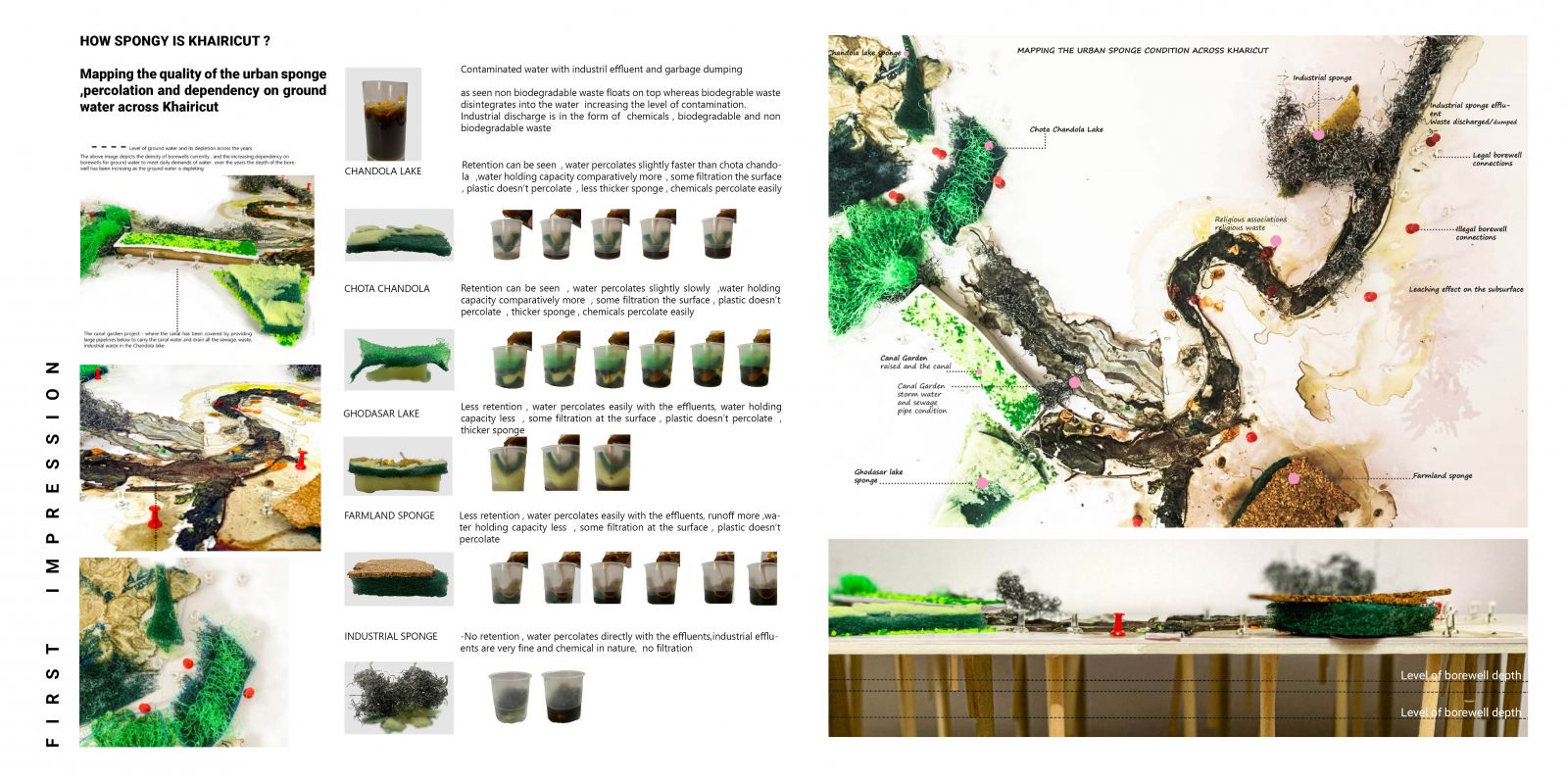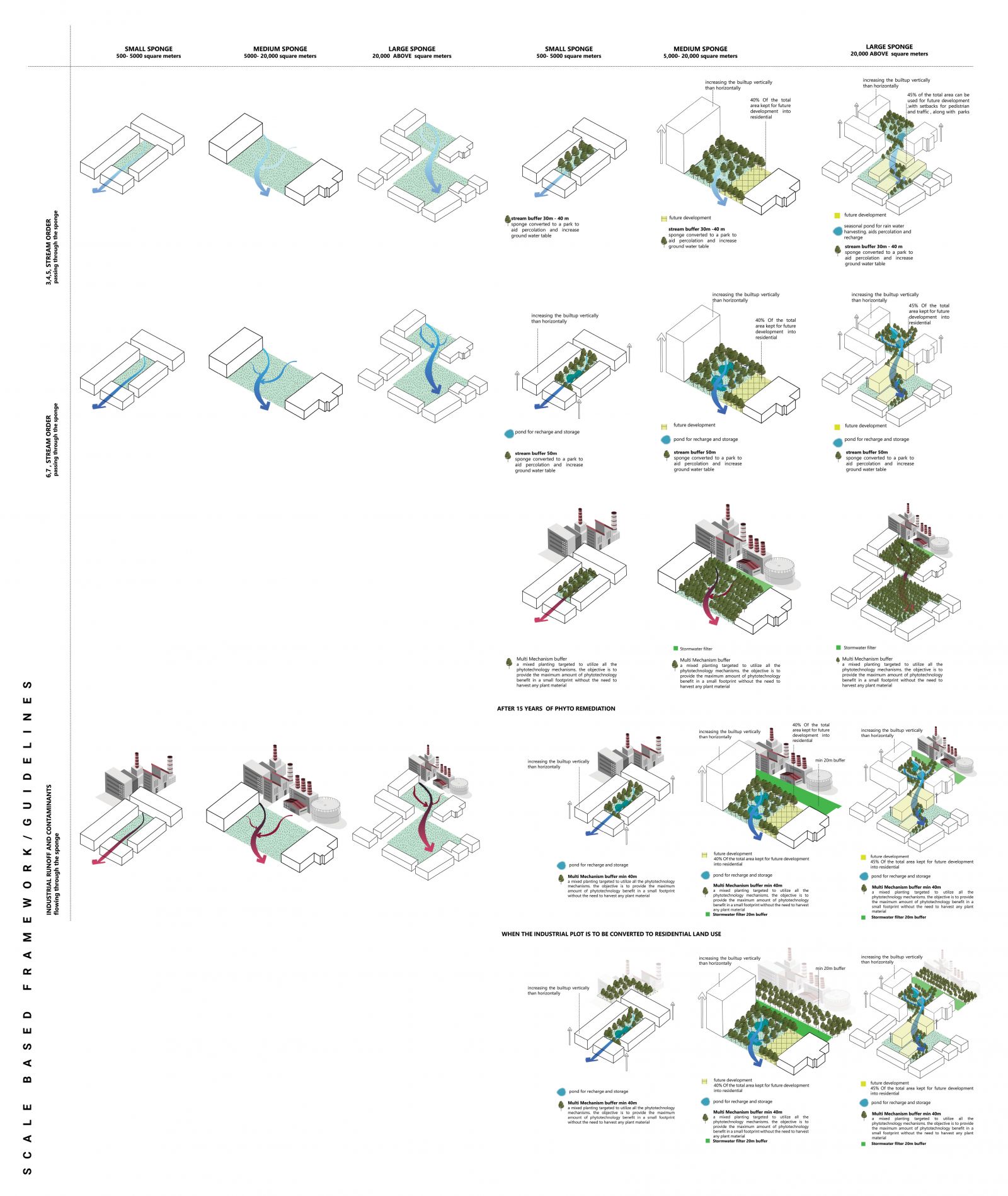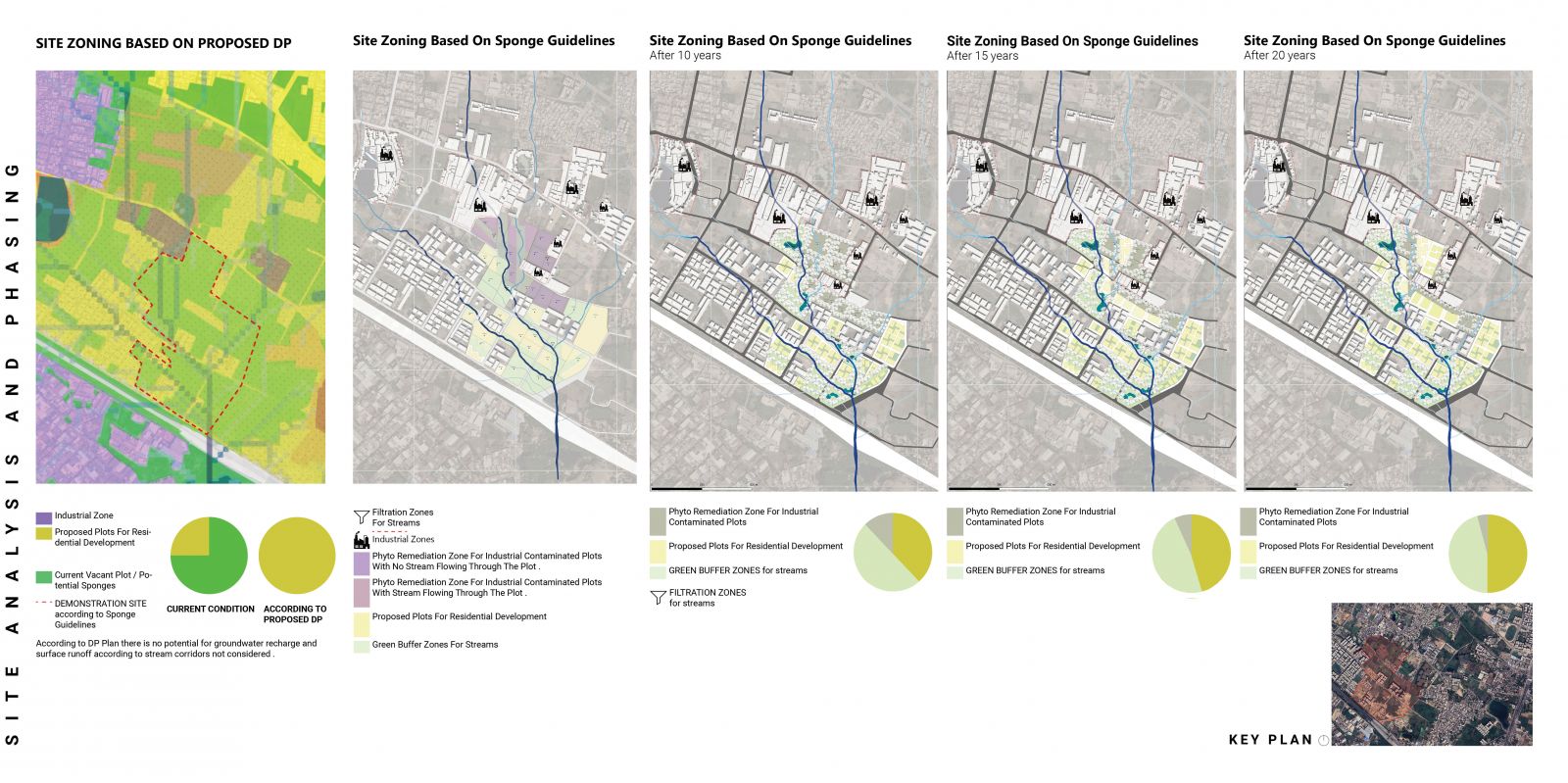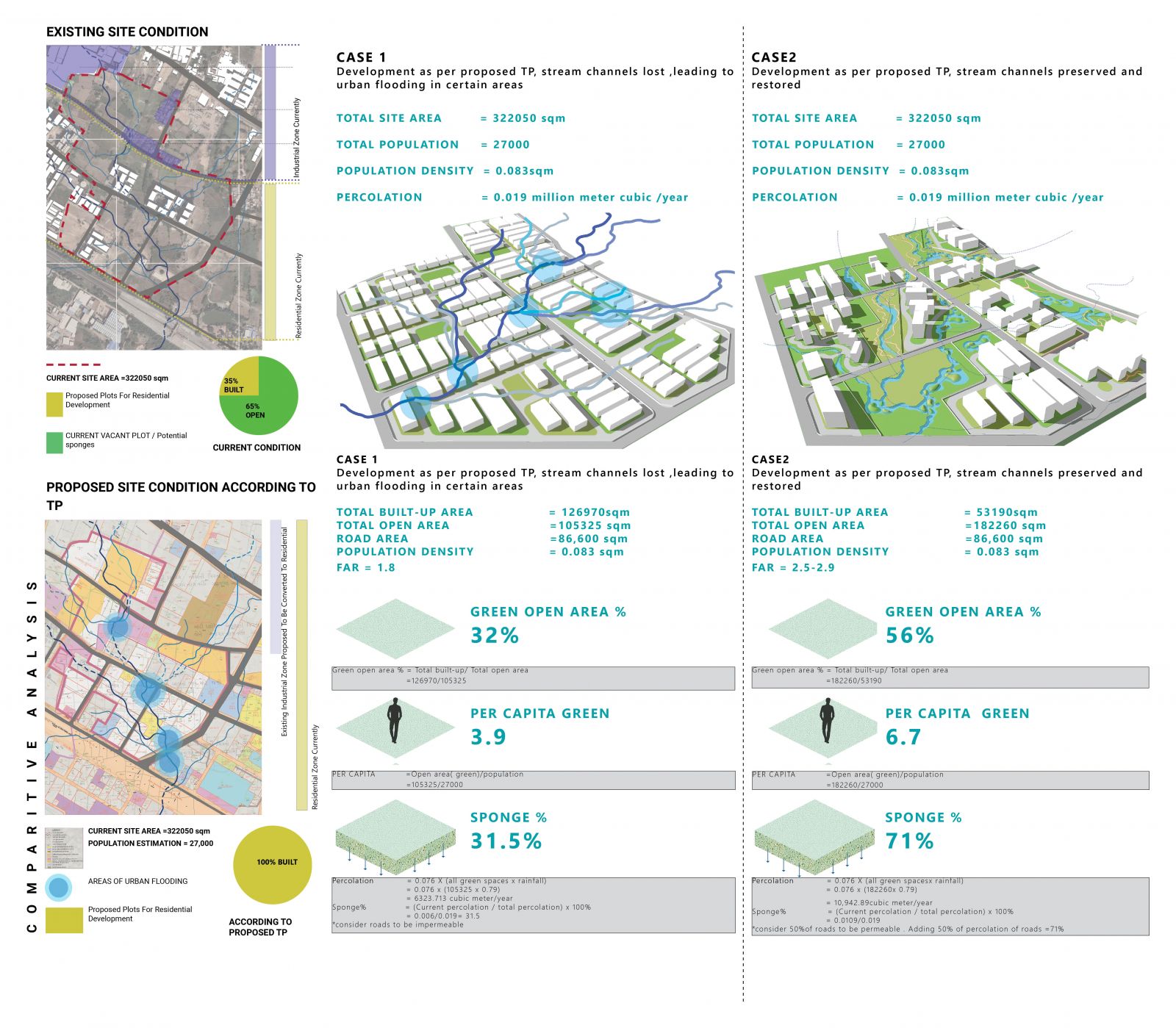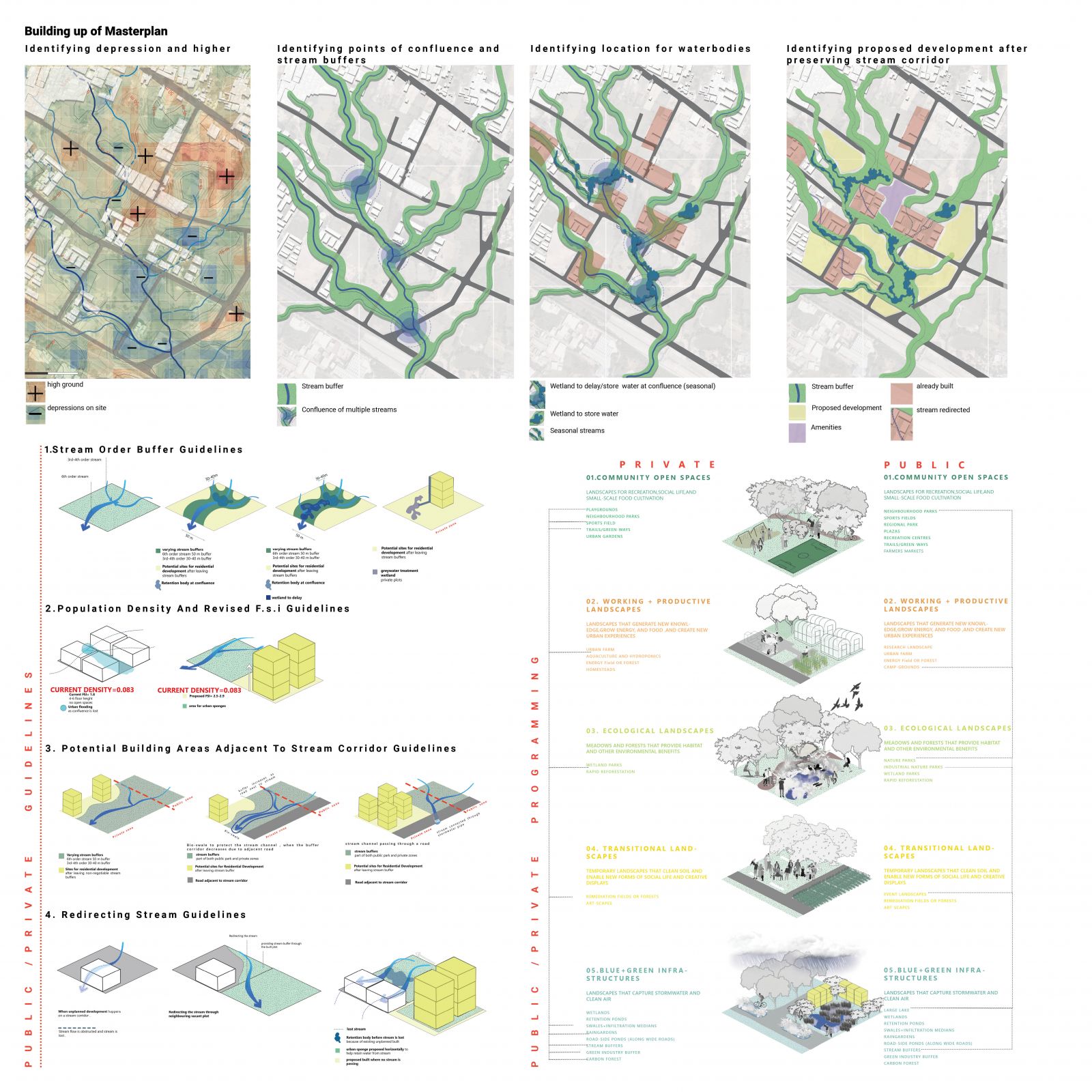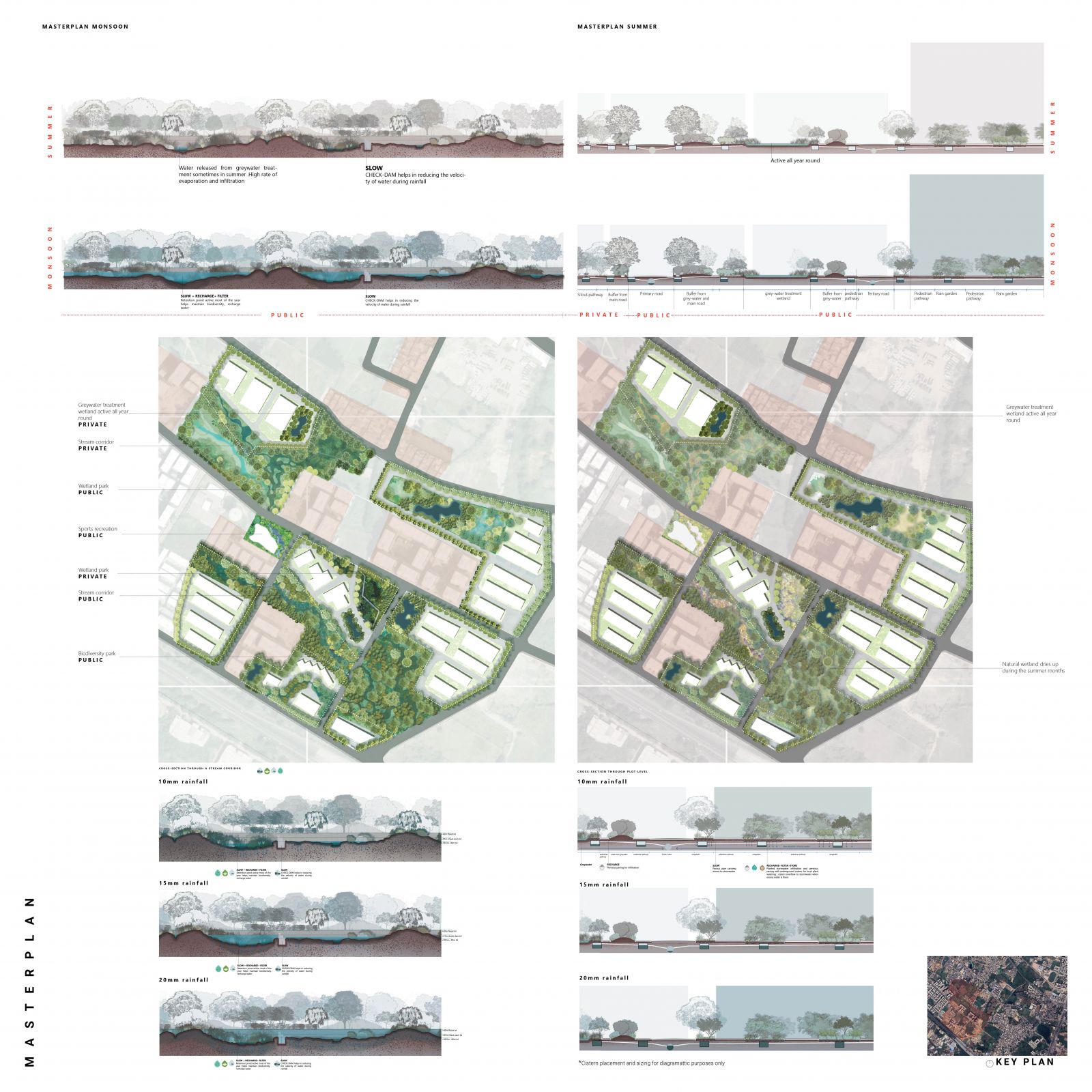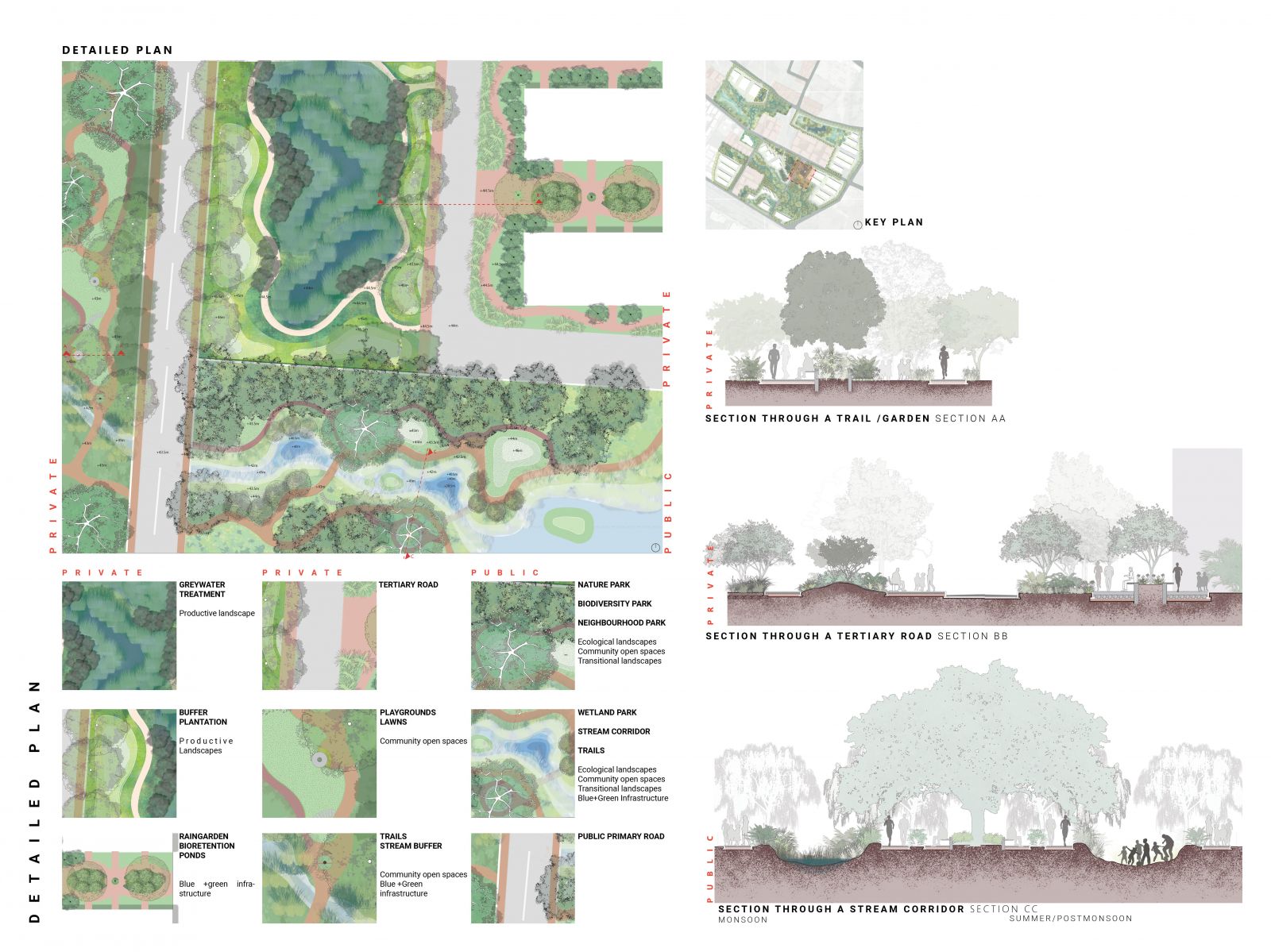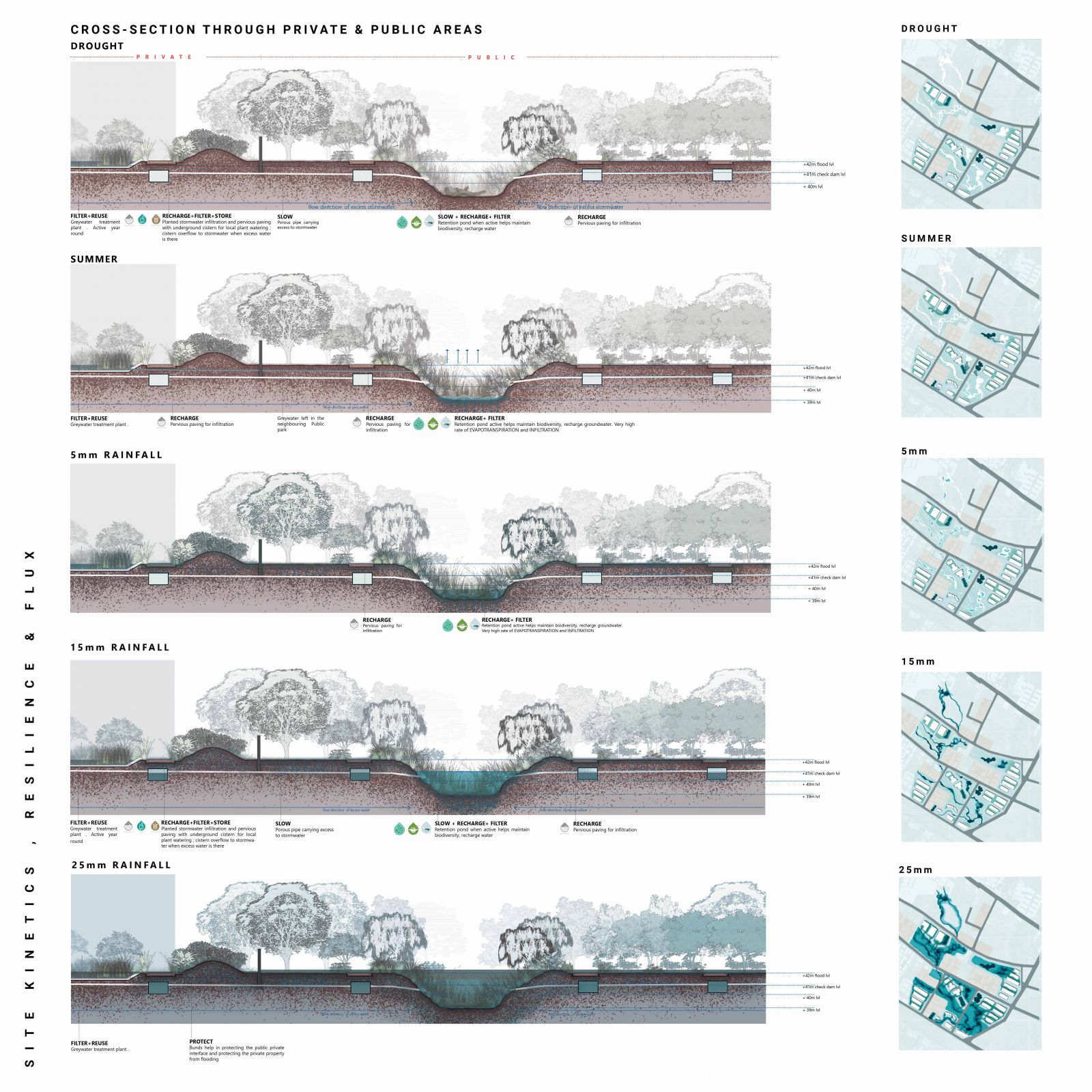Your browser is out-of-date!
For a richer surfing experience on our website, please update your browser. Update my browser now!
For a richer surfing experience on our website, please update your browser. Update my browser now!
Faced by the adversities of climate extremes, sponge developments are gaining favour to make cities more resilient and flood resistant. The sponge response to slow down the water movement by capture, delay, and release mechanism have gained traction, especially in areas where city stops regular functioning due to urban flooding, multiple times over the monsoon months. While these problems are witnessed in areas with high rainfall, the problem with urban water is twofold – the surface (seen) and sub-surface (unseen) water. With a focus on Ahmedabad, a semi-arid city in Western India, the project argues the need of sponge development to address the unseen water. Borrowing the framework from Chennai Sponge City model, the project develops a scale-based methodology with neighborhood level (L), block level (L), and plot level (S) guidelines that protects the natural stream corridors, retains the critical urban open spaces, and yet achieves the required density and amenities of proposed DP and TP schemes. The guidelines ensure certain non-negotiable grounds based on local topography and hydrology, while allowing a choice-based guideline to give autonomy to the local government bodies, developer, and private citizens at L, M, and S scale to pick and choose a solution. The project outcome of the framework named SOAK (Smart Option Adaptive Kit) is theoretically tested on a site in peri-urban Ahmedabad to demonstrate the value of designing with water in the arid context.
